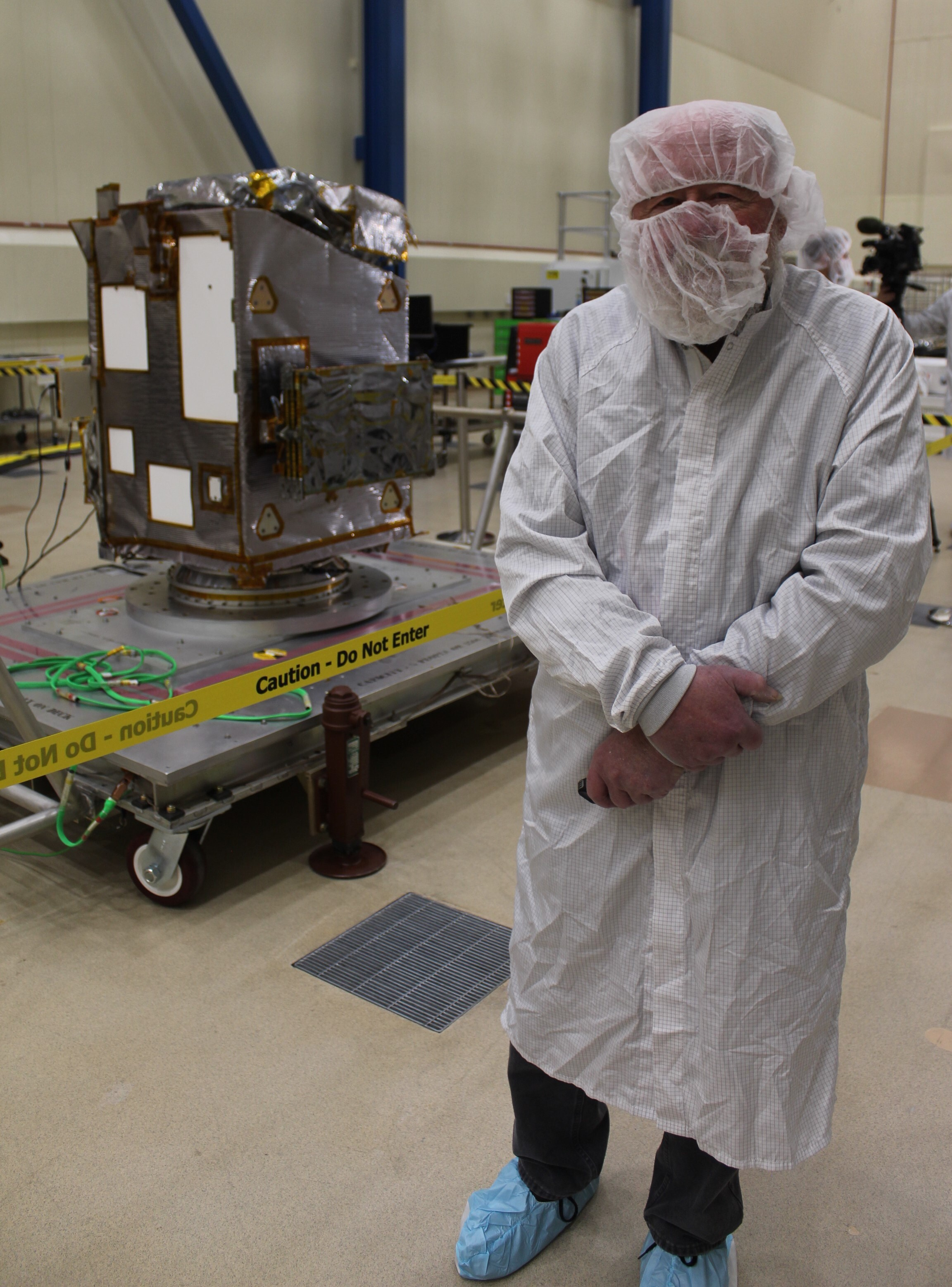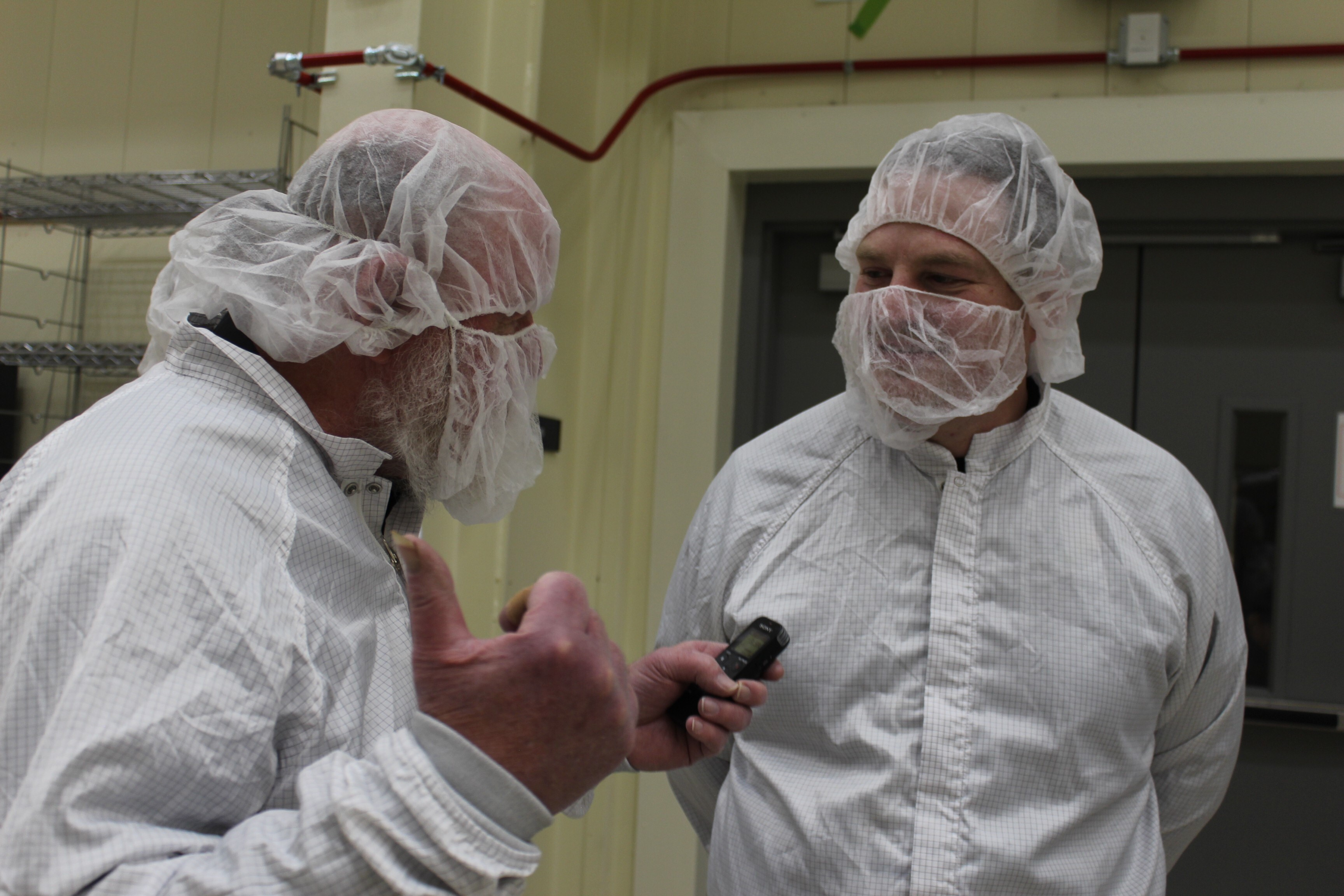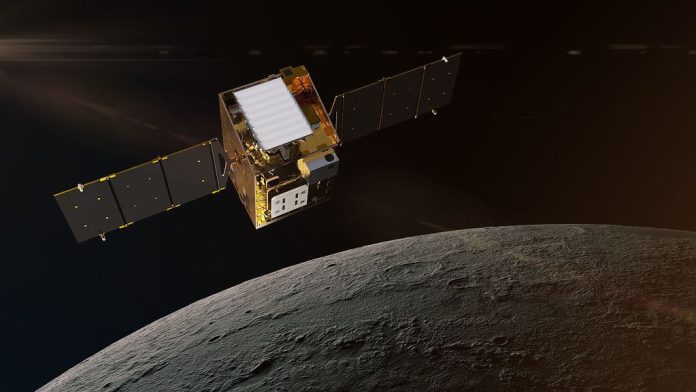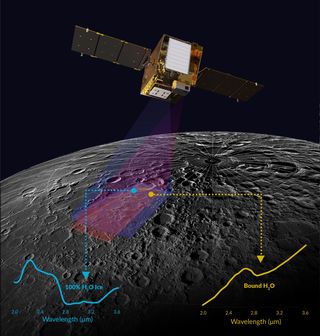LITTLETON, Colorado — A university-led lunar orbiter designed to pinpoint the location of ice or liquid water trapped in rocks on the moon’s surface is nearly ready for takeoff.
The Lunar Trailblazer is slated to launch atop a SpaceX Falcon 9 rocket no earlier than Feb. 26 from NASA’s Kennedy Space Center in Florida. It will fly as a “rideshare” along with the primary payload — the Athena lunar lander, built by Houston company Intuitive Machines.
Here within a Lockheed Martin clean room, where it underwent final grooming ahead of shipping to Cape Canaveral, Lunar Trailblazer utilized the aerospace company’s new Curio platform. Curio is a novel and scalable smallsat spacecraft architecture, designed to aid deep-space exploration and to probe scientific questions in a cost-efficient way.
Lunar Trailblazer is managed by NASA’s Jet Propulsion Laboratory (JPL) and led by the California Institute of Technology (Caltech) in Pasadena. Bethany Ehlmann, professor of planetary science at Caltech, is the mission’s principal investigator.
Lockheed Martin developed and built the roughly 440-pound (200 kilograms) spacecraft, as well as integrated the craft’s science instruments. The probe is outfitted with two deployable solar arrays.
Related: Private Athena moon lander arrives in Florida ahead of SpaceX launch on Feb. 26
Water signature
Lunar Trailblazer instruments will peer into the moon‘s permanently shadowed regions to spot micro-cold traps less than a football field in size. Furthermore, the pole-to-pole probe will collect measurements at multiple times of day over sunlit regions, helping researchers decipher whether water signatures on the illuminated surface change as the lunar surface temperature changes by hundreds of degrees over the course of a lunar day.
“Lunar Trailblazer shares a good bit of heritage with the GRAIL spacecraft that explored lunar gravity,” said Bronson Collins, Lunar Trailblazer spacecraft chief engineer.
NASA’s GRAIL (“Gravity Recovery and Interior Laboratory”) mission launched twin spacecraft dubbed “Ebb” and “Flow” to lunar orbit in 2011. The GRAIL probes were also designed and built by Lockheed Martin.
Launch window
Lunar Trailblazer is part of NASA’s Small Innovative Missions for Planetary Exploration (SIMPLEx) program, targeted to gather science data as it circuits the moon. The spacecraft will be operated by both Caltech and Pasadena City College students at the Caltech-based Infrared Processing and Analysis Center (IPAC).
During my Jan. 23 clean room look at the spacecraft, Collins pointed out the two Lunar Trailblazer science instruments: the JPL-provided High-resolution Volatiles and Minerals Moon Mapper (HVM3) and the Lunar Thermal Mapper (LTM), from the University of Oxford in England.
“All of the science mission is really done by those two instruments,” Collins said. They are mounted on the Curio platform that incorporates a large spherical propellant tank. “It will consume a lot of that propellant at the start of the mission to get to the moon,” he told Space.com.
Depending on the launch window day, Lunar Trailblazer will arrive at the moon four to seven months after liftoff. Once on duty in lunar orbit, the mission is slated to last a year or more. When Lunar Trailblazer wraps up its scientific sleuthing, it will be purposely crashed into the moon. That end-of-life route is labeled “surface disposal,” said Collins.
Related: Missions to the moon: Past, present and future
Raising risk, saving dollars

“This is the first in our Curio line of spacecraft, and we learned a lot,” said Ryan Pfeiffer, Lockheed Martin program manager for Lunar Trailblazer. “That product line is intended to enable lower-cost, faster access to space. We hope it’s the first of many.”
As a low-cost mission, “our risk posture is a little bit greater here to try and conserve some budget,” Pfeiffer said. That tradeoff between raising risk and saving dollars means Lunar Trailblazer embodies “single string spacecraft architecture.”
In other words, the probe doesn’t have redundancy in its computers or other key parts of the flight system. In addition, Lunar Trailblazer also uses commercial off-the-shelf parts and systems, not custom-designed hardware.

Water works
Scientists are eager to understand just how water and water-like products are freezing, thawing, moving and evaporating on the moon, Pfeiffer said. “They are interested in all those conditions to try and understand how water works on the moon,” he said.
Here on Earth, we understand the water cycle fairly well, Pfeiffer added.
“But only recently has there been a glimmer of hope that there is water on the moon,” he said. “It has now been confirmed, but we have no idea how it works, why it’s there and how it got there.”





